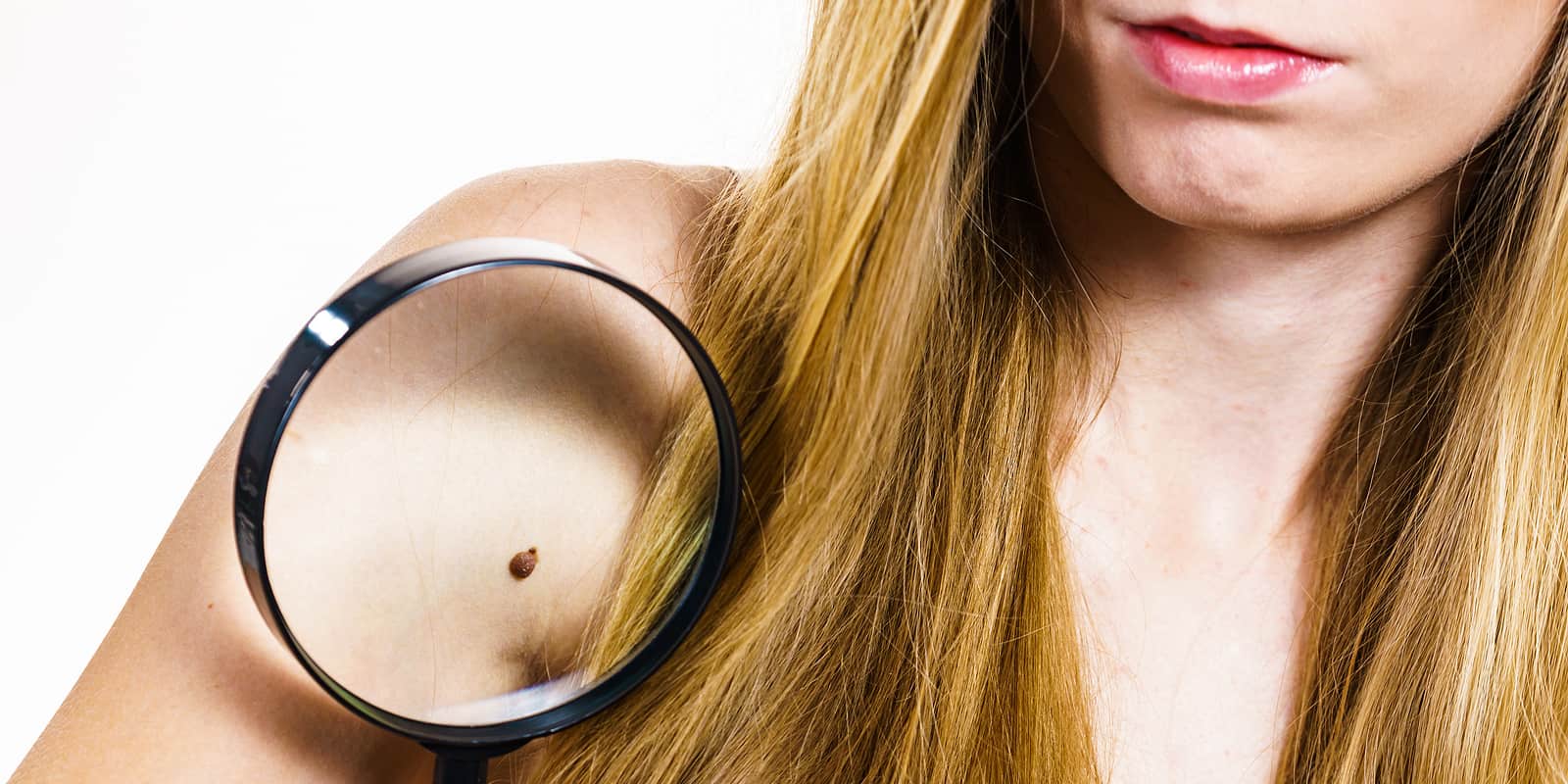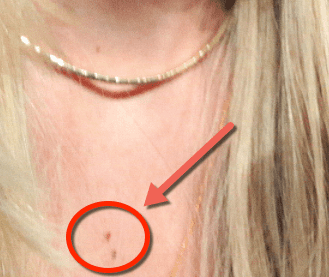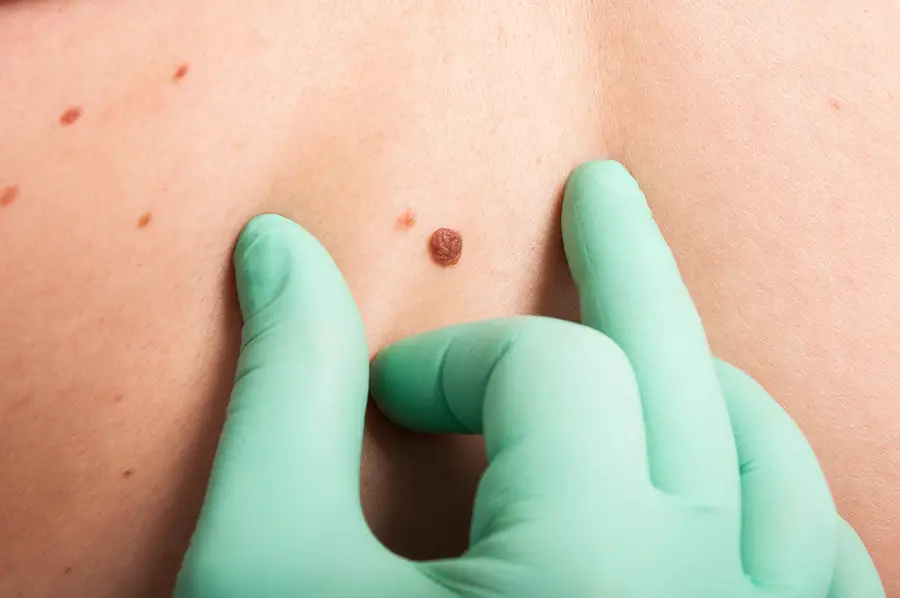Moles are a common feature found on many people’s skin. They come in all shapes and sizes, and most are completely harmless. However, certain types and changes in moles can signify something potentially dangerous such as melanoma. Recognizing the difference between safe and suspicious moles is essential for keeping you and your skin healthy.
What is melanoma?
Melanoma is a malignant form of skin cancer that occurs in the melanin-forming cells in our body. These cells, called melanocytes, control skin pigment. Melanoma typically occurs on our skin exposed to sunlight, but it can also occur in the mouth, intestines, eye, soles of our feet, palms of our hands, and fingernail beds. In women, melanoma occurs most frequently on the legs. In men, it occurs more commonly on the back.
Causes of melanoma
The connection between moles and melanoma is that moles can increase your chances of developing this form of cancer. Around 20 to 30 per cent of melanoma develops from already existing moles. However, other factors affect your likelihood of developing it.
Melanoma is most linked to exposure to UV light from the sun. This includes both UVA and UVB from the sun and artificial sources such as tanning beds.
The likelihood of developing melanoma from this exposure depends on the intensity and duration of sun exposure, the age when you are exposed, and skin pigmentation. For example, people that use a tanning bed before the age of 30 are 75 per cent more likely to develop melanoma. In addition, frequent sunburns, outdoor occupations, living in areas with high sun exposure (e.g., closer to the equator) all increase your chances.
Genetics is another thing that plays and role in causing melanoma. As mentioned above, moles have a chance of developing into skin cancer. If moles are a common genetic trait in your lineage, you are at a higher risk, especially if you have more than 50 moles on your body.
Another genetic factor that affects your risk is skin colour. Fair-skinned people are at a higher risk. This is especially true in areas with lots of sun that are settled by people of European descent (e.g., Australia).
Finally, some genetic conditions and mutations increase risk. For example, dysplastic nevus syndrome, a condition that causes irregularly shaped moles, increases your risk. Additionally, people with the MC1R gene, which causes red hair, are two to four times more likely to develop melanoma.
Types of melanoma
There are many types of melanoma, but the four most common ones are:
- Superficial spreading melanoma
- Nodular melanoma
- Lentigo maligna melanoma
- Acral lentiginous melanoma
Superficial spreading melanoma
This is the most common form of melanoma. It accounts for approximately 70 per cent of melanoma skin cancers. This type of melanoma grows outwards and typically spreads across the skin, but it can also grow under the skin. It is often flat and thin, with an uneven border. It can also be varied in colour, including red, blue, brown, black, grey, and white. It can form on its own or start from a mole. It is usually found in the central body or on the arms and legs.
Nodular melanoma
Nodular melanoma is the second most common type of melanoma. It accounts for about 15 to 20 percent of all cases. This appears as a raised growth that sticks out of the skin. It may be shaped like a mushroom with a stem. It grows down into the skin and grows and spreads more quickly than other forms of melanoma. It is often black but can also be red, pink, or the same colour as the skin. It is often found on the face, chest, and back; but can also be on parts of the body not exposed to the sun.
Lentigo maligna melanoma
Lentigo maligna melanoma form of melanoma accounts for approximately 10 to 15 per cent of all cases and is typically found in older people. This type of melanoma is a tan or brown colour that tends to get darker as it grows. It is a large, flat patch with uneven borders. It grows outwards across the skin’s surface for many years before it goes down into the skin. It often occurs on the face, ears, and arms.
Acral lentiginous melanoma
This form of melanoma accounts for less than five per cent of all cases and occurs most commonly in people with darker skin tones. It appears as a small, flat spot discoloured from the rest of the skin is often dark brown or black. This type of cancer takes a long time to grow into the skin. As a result, it is one of the most difficult diagnoses because it occurs in hard-to-see areas such as soles of feet, palms of hands, and under nails.
Other rare types of melanoma include:
- Mucosal lentiginous melanoma – occurs on moist lining or organs and other parts of the body such as the throat.
- Intraocular melanoma – occurs in the eye.
- Desmoplastic melanoma – develops on the inner layer of the skin or layer of connective tissues that surround mucosa. This often occurs in areas such as the head, neck, upper back.
Signs and symptoms of melanoma
Melanoma can appear anywhere on the body, even in areas that do not receive much sunlight. Some types may also be hard to catch. However, one of the first signs of melanoma can be changes in a current mole or the development of new, unusual growth, patch, or lump on the skin.
One of the best ways to diagnose changes in a mole is to understand the differences between a normal and suspicious mole. Normal moles can vary greatly in size, shape, and colour. However, they are typically uniform in colour, oval or round in shape, smaller in size, and have a distinct border separating them from the rest of your skin. Most moles appear in childhood but can continue to appear until about the age of 40. Additionally, moles may change or disappear over time.
One of the best ways to diagnose an unusual mole is through the acronym ABCDE. Here is what each letter means.
- Asymmetry.
- Borders. Irregular borders with edges and corners,
- Colour. Not being uniform in color or being different from most of your other moles.
- Diameter. If the moles are bigger than 6mm.
- Evolving. Moles can change over time, but if it is doing so irregularly, this may also be a sign.
Melanoma may have all or a couple of these characteristics.
Nodular melanoma can also be diagnosed using the acronym: EFG.
- Elevated above the skin surface.
- Firm to the touch.
- Growing.
Signs and symptoms for hidden melanomas can be more challenging to notice. Therefore, it is a good idea to contact your doctor if you notice changes or irregularities under your nails, on the palms/soles of your hands and feet, in your mouth, digestive tract, eyes, and more.
Why is this important?
It is important to understand moles and melanoma to properly assess your risk of developing this form of skin cancer. Ways to minimize your risk include:
- Reducing your exposure to sunlight.
- Wearing UV protection (e.g., sunscreen, sunglasses, thick clothes, etc.)
- Getting physicals.
- Check your moles regularly.
It is a good idea to check your moles every couple of months, and those with increased risk should ideally have their moles examined once a year.






